A Trophy Experience
"The early morning light had revealed the gateway to the summit of Everest and in parallel a human being who had lost his life. Here we all were, chasing a dream and beneath our very feet there was a lifeless soul. Is this what Everest has become?"
"This poor human being perched 7000ft. above the Western Cwm for everyone to observe was a reminder of each of our own mortality. Was this the 'Dream of Everest' we all imagined?"
"My heart bled for the family and loved ones and at the same time I was conscious of the necessity to continue to move. At nearly 9000m above sea level, there is no choice but to carry on."
"Who is responsible here? The individuals? the companies? The Government? Is it time to enforce new rules? Will things ever change? What's the solution here?"
"With great sadness, as the queues pushed onwards and upwards, so did we, as did over 200 people that day."
"Death. Carnage. Chaos."
Elia Saikaly, Ottawa film maker, climber, Facebook posting
"The idea isn't to push yourself to the ultimate maximum to reach the summit."
"Then there's no steam or energy left in your body to get down."
Gordon Janow, director of programs, Alpine Ascents International
"She had to wait for a long time to reach the summit and descend."
"She couldn't move down on her own and died as Sherpa guides brought her down."
Thupden Sherpa, tour organizer
"If you are setting out on an Everest expedition, it is no less than heading for a war."
"[Climbing Everest is like] attaining the highest pilgrimage. It is just like waiting for your turn outside a temple."
Mingma Sherpa, Seven Summit Treks
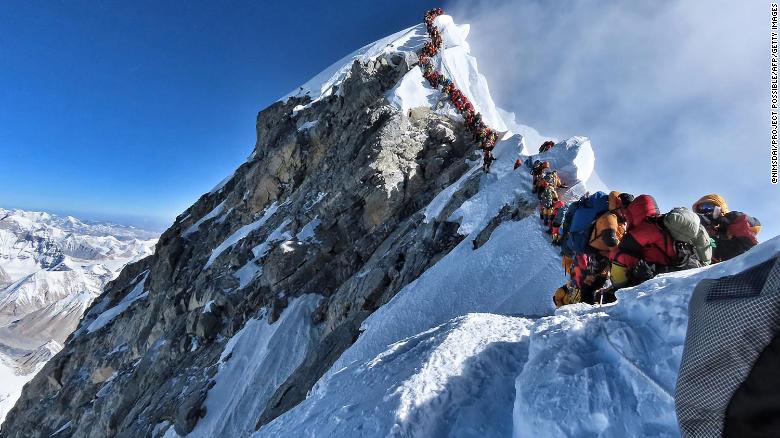 |
| Climbers wait to reach the summit of Everest in this image taken May 22.This handout photo taken on May 22, 2019 and released by @nimsdai Project Possible shows heavy traffic of mountain climbers lining up to stand at the summit of Mount Everest. (@nimsdai, Project Possible/AFP) |
Ascending the highest point of Earth's crust in the Himalayas was once considered the ultimate challenge to nature in the most hostile-to-life atmosphere on Earth. Once Sir Edmund Hillary and Tenzing Norgay accomplished the feat by helping one another achieve the summit of Mount Everest, it became a lifetime challenge for other accomplished alpinists, climbers from all over the world who felt it their destiny to experience the rigours of the climb, the dangers of avalanches, of dizzying heights and exhaustion, threats of falling over a precipice, and waiting out high winds and snowstorm conditions.
Some realized their aspirations, some did not. Most returned, some failed to. Subsequent climbers saw the frozen corpses and disregarded their presence. The mountain became increasingly littered with discarded climbing equipment, with exhausted oxygen tanks, with the organic detritus of climbers relieving themselves. This, on the mountain sacred to the indigenous populations living on the Himalayas' lower flanks. Buddhist monks bless the travellers who enter their temples in hopes that they would be shielded from disaster.
Disaster entered on the heels of transforming the peerless mountain from its aloof serenity as a marvel of nature, to a too-well-travelled route by well-heeled people who hadn't the physical stamina, the energy and the strength, much less the absolute skills and experience to make the climb, and who depended on the expertise of Sherpas to guide them and to haul their equipment from base camp to the higher camps as they acclimated to thinner air in their gradual assault on the mountain.
The most popular route through Nepal was over-subscribed, too many permits sold, and too many aspirants crowding the route, clogging the way and resulting in long delays in an atmosphere of misery and anxiety, with hellish temperatures and the threat of injury, falls, accidents, and the dreaded hypobaric hypoxia all of which mean a possibly aborted mission, and an emergency return to base camp where a helicopter could be dispatched to take the sufferer to hospital.
 |
| Robin Hayes, who wrote at length about Everest’s crowded queues just a week ago, completed his summit on Saturday, but died of what is assumed to be altitude sickness upon his descent. Mike Wehner, BGR |
The idea is not to linger at the top of the world, but to begin to descend at a time in the afternoon that will ensure arrival at the last camp before the summit before nightfall. "I've seen traffic, but not this crazy", said Nirmal Purja, an accomplished climber attempting to summit 14 peaks around the world in a seven month period, on his descent from the Everest summit who stopped to photograph the scene of hundreds of climbers lining up behind him in the unusual cold and crowded area.
The traffic on Everest has changed much about the original quest of climbers to experience the ultimate ascent. It is now given over to people for whom summiting Everest has become a goal synonymous with boastful egotistical celebrity. Inexperienced people, people hoping to feel thrilling fear, people who think nothing of leaving garbage behind them as though to proclaim "I was here!"
Peter Beaumont write in the Guardian of the "anxiety-inducing conga line in the death zone"; just before the summit where it is deathly cold, where oxygen is threateningly thin and worrisome if one's tank becomes depleted, and where extreme exhaustion can mean a careless step and death. It is, he wrote, "not only dread you sense, but hubris too", of the world's peak that "has become a trophy experience". When too many people set out at once in a brief window of good weather to make a break for the fabled summit.
Come what may.
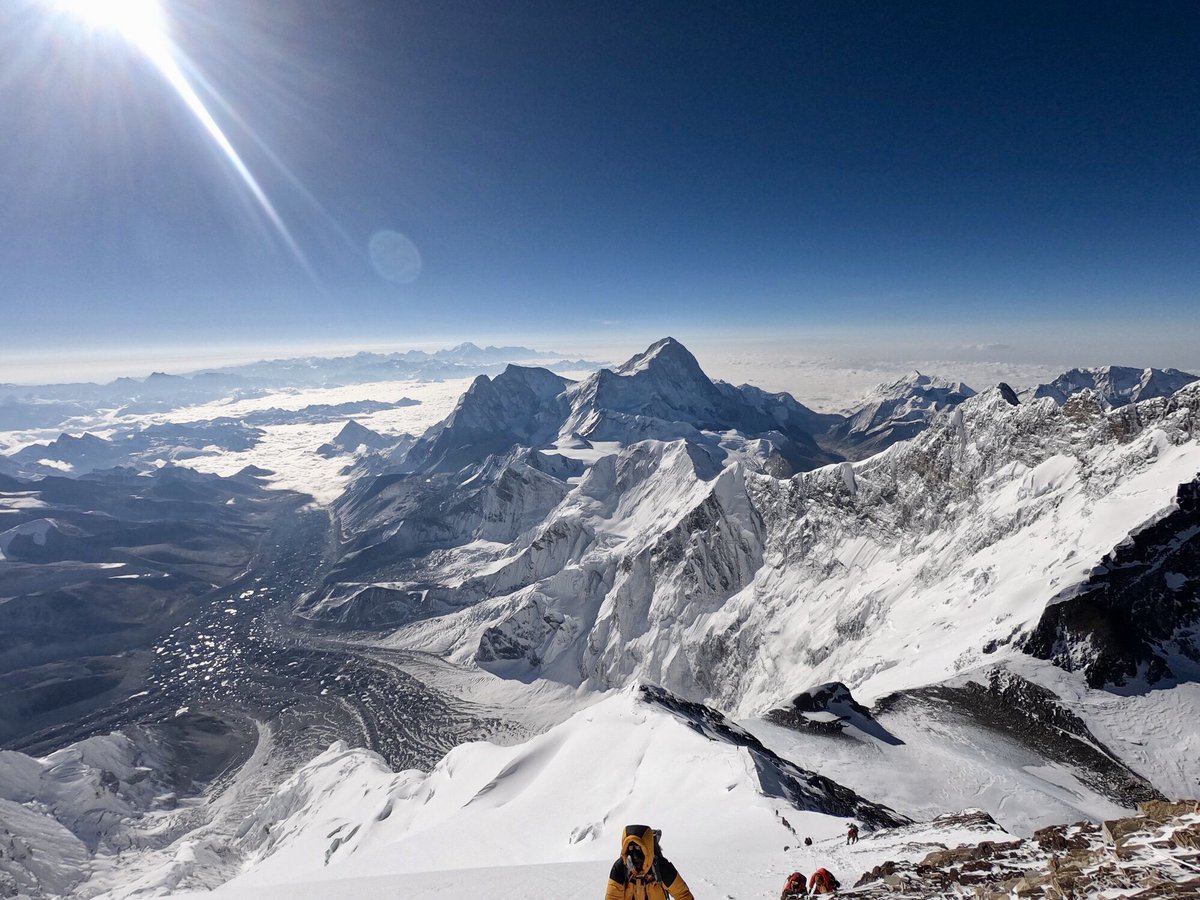
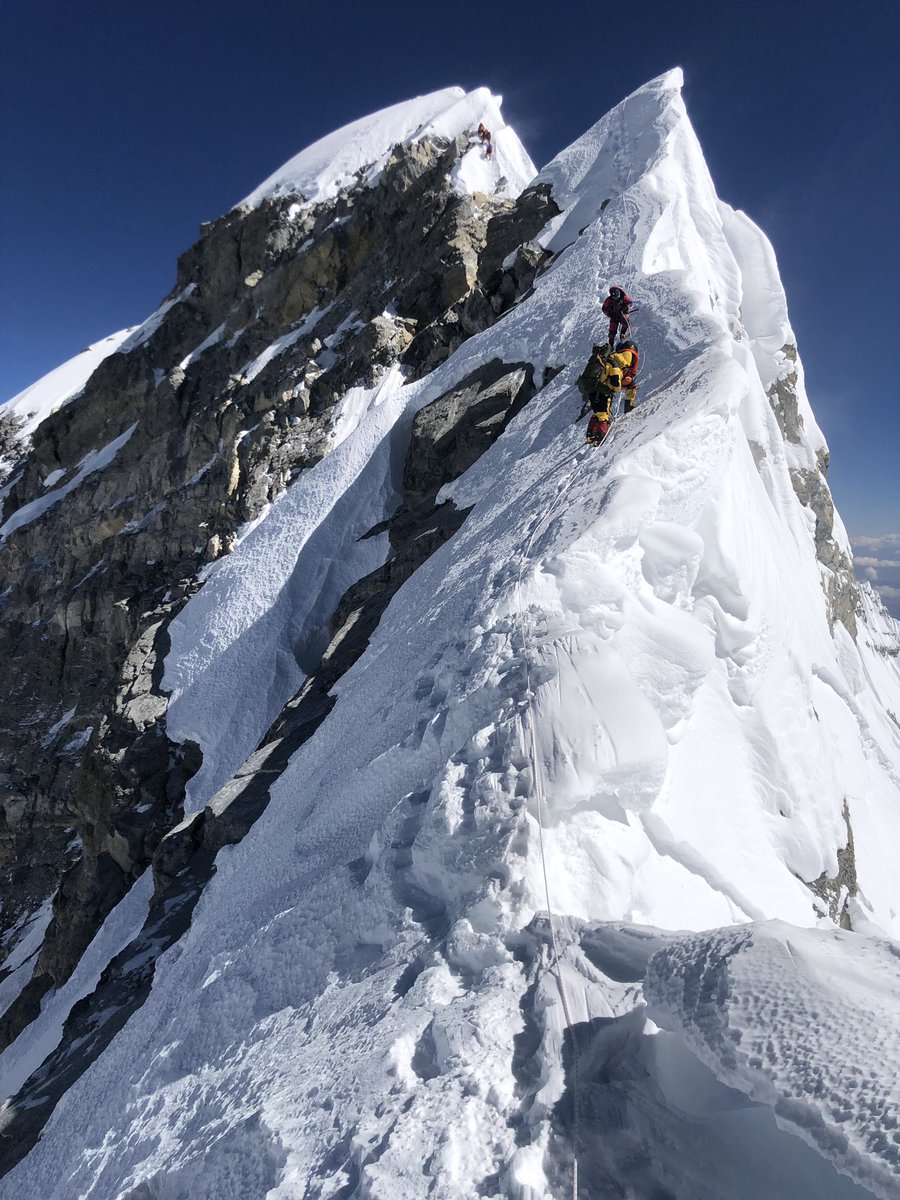
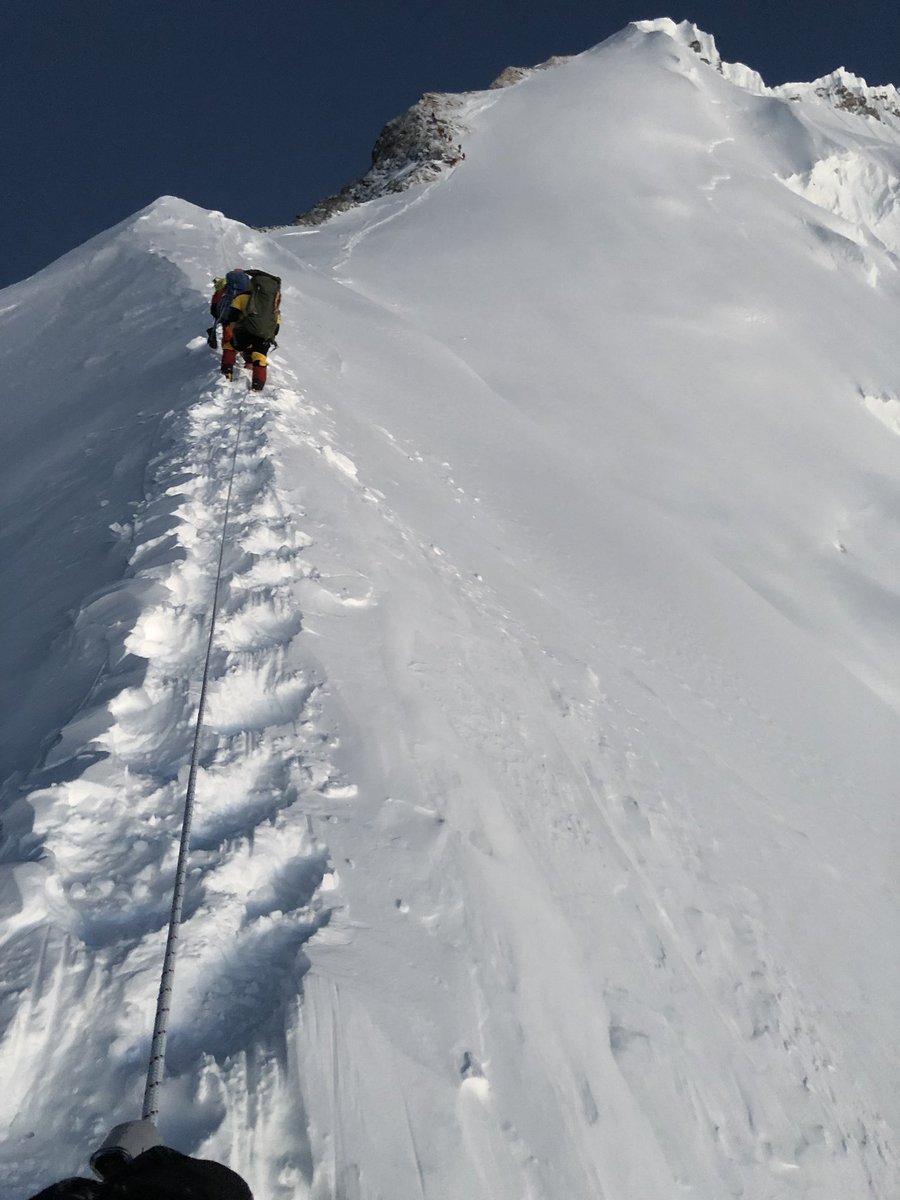
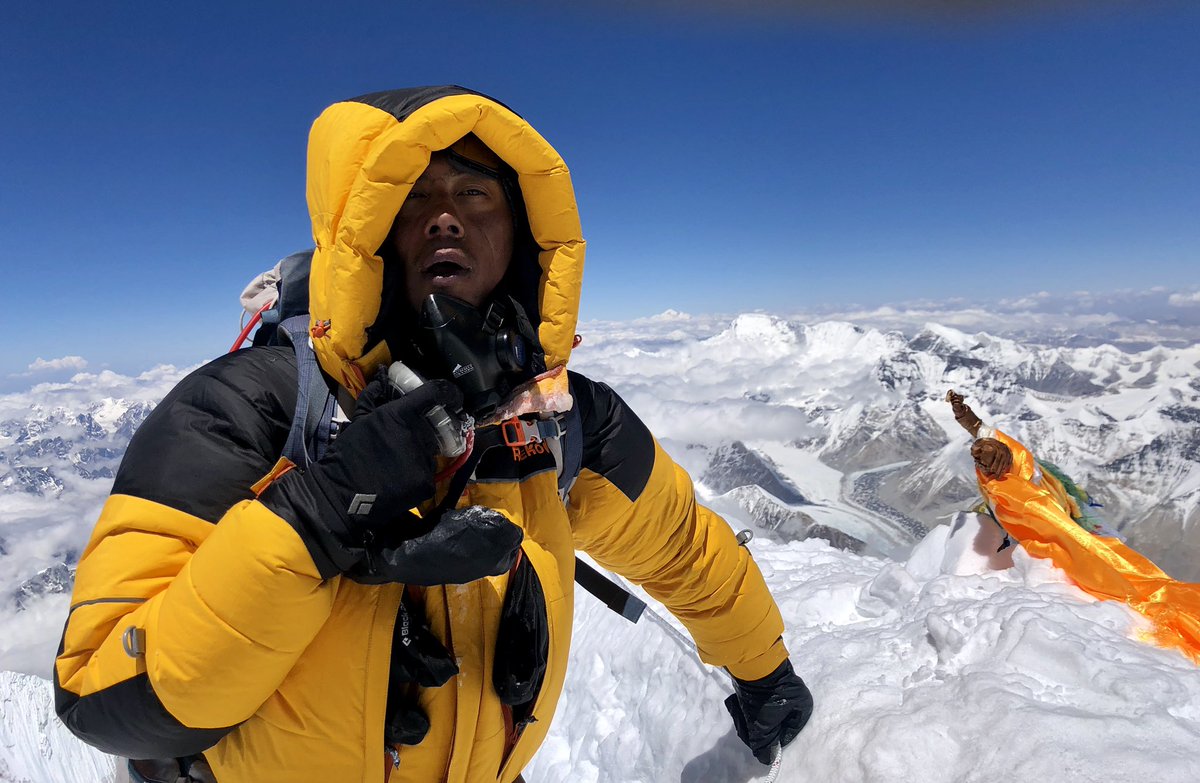
Labels: Climbing Season, Crowding, Deaths, Mount Everest, Nepal, Permits


<< Home